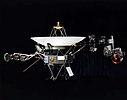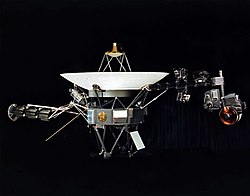Sonda

Sonda může být
- Sonda (měření) — část měřicího přístroje nebo aparatury, která se umisťuje do zkoumaného prostoru nebo měřené látky, např.
- měřící sonda
- gastrointestinální sonda
- nazogastrická sonda
- nanosonda
- sonda v lékařské ultrasonografii
- Sonda (chemie) — chemická látka interagující (neinvazivně) s okolním prostředím, která změnou svých fyzikálně-chemických vlastnosti podává informaci o dějích v okolí, např.
- fluorescenční sonda
- hybridizační sonda
- Meteorologická sonda
- Restaurátorská sonda. Dílčí odkryv povrchových vrstev např. výtvarného díla směřující ke zjištění původní podoby (barevnosti, ikonografie apod.). Zpravidla se sondy provádějí pro posouzení historických proměn a památkové hodnoty díla a koncipování jeho opravy restaurátorským zásahem apod.
- Archeologická sonda. Dílčí, prostorově limitovaný invazivní archeologický výzkum k ověření přítomnosti archeologicky cenných nálezů.
- Softwarová sonda. V informačních systémech se jedná o nástroj k monitoringu součástí systému.
- Kosmická sonda
- Sonda (městečko) — městečko ve východním Estonsku
- Sonda (obec) — samosprávná obec ve východním Estonsku, zahrnující městečko Sonda a několik menších okolních sídel
- Sonda (Star Trek) – kniha z prostředí Star Treku
- Sondy – publicistický pořad Československé televize z konce 80. let
- v přeneseném významu: průzkum veřejného mínění nebo (sonda do vědomostí) písemná zkouška
Související články
Externí odkazy
 Slovníkové heslo sonda ve Wikislovníku
Slovníkové heslo sonda ve Wikislovníku Encyklopedické heslo Patradlo v Ottově slovníku naučném ve Wikizdrojích
Encyklopedické heslo Patradlo v Ottově slovníku naučném ve Wikizdrojích
Média použitá na této stránce
NASA photograph of one of the two identical Voyager space probes Voyager 1 and Voyager 2 launched in 1977.
The 3.7 metre diameter high-gain antenna (HGA) is attached to the hollow ten-sided polygonal body housing the electronics, here seen in profile. The Voyager Golden Record is attached to one of the bus sides.
The angled square panel below is the optical calibration target and excess heat radiator.
The three radioisotope thermoelectric generators (RTGs) are mounted end-to-end on the left-extending boom. One of the two planetary radio and plasma wave antenna extends diagonally left and down, the other extends to the rear, mostly hidden here. The compact structure between the RTGs and the HGA are the high-field and low-field magnetometers (MAG) in their stowed state; after launch an Astromast boom extended to 13 metres to distance the low-field magnetometers.
The instrument boom extending to the right holds, from left to right: the cosmic ray subsystem (CRS) above and Low-Energy Charged Particle (LECP) detector below; the Plasma Spectrometer (PLS) above; and the scan platform that rotates about a vertical axis.
The scan platform comprises: the Infrared Interferometer Spectrometer (IRIS) (largest camera at right); the Ultraviolet Spectrometer (UVS) to the right of the UVS; the two Imaging Science Subsystem (ISS) vidicon cameras to the left of the UVS; and the Photopolarimeter System (PPS) barely visible under the ISS.
Suggested for English Wikipedia:alternative text for images: A space probe with squat cylindrical body topped by a large parabolic radio antenna dish pointing upwards, a three-element radioisotope thermoelectric generator on a boom extending left, and scientific instruments on a boom extending right. A golden disk is fixed to the body.Oscilloscope probe in use


